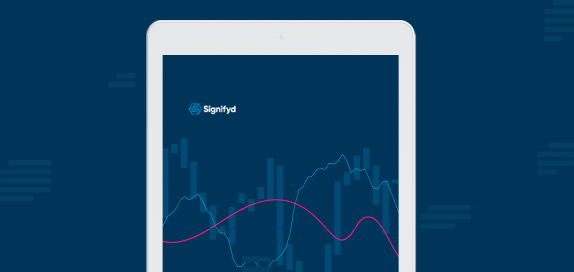The United States and China have been at odds over trade for over a full year. As this trade war drags on, uncertainty clouds commerce worldwide and puts everyone in a tight spot — including shoppers, merchants and logistics providers.
This impacts every step of the shopping journey. Consumers face price increases and product availability decreases. Small business owners face tough decisions to save money: absorb additional costs from the double-digit tariffs, or cut staff. Shipping and logistics operations can’t function efficiently in times of uncertainty fueled by economic chaos. Even cross-border commerce will feel the sting of the U.S. tussle with China.
Here are five ways the U.S. and China trade war is impacting ecommerce — in some ways you may have never considered.
Businesses and consumers stand to lose the most
Starting in July 2018 the U.S. government levied a 25 percent tariff on over 800 categories of goods imported from China. Companies like Apple and Walmart have filed letters of opposition to the U.S. government’s plan for more tariffs on Chinese goods.
The problem is that many popular products in America come from China, including iPhones, MacBooks, and single-serve coffee brewers. And it’s not just about the so-called luxury items
of high-powered smartphones. Air conditioner maker Carrier said the latest round of tariffs on air conditioner parts will result in significant price increases for U.S. consumers of American-manufactured HVAC equipment.
This means less demand to replace older, inefficient systems for consumers who could be priced out of a new heating or air conditioning system.
For retailers like Dollar Tree, the trade war’s impact goes beyond profits. Dollar Tree is one of the top 50 U.S. employers and seventh largest importer from China. The imposition of an additional 25% duty on the types of everyday household products we offer will have a significant and disproportionate negative impact on middle- and low-income American households,
Dollar Tree said in a Reuters report.
Large groups of consumers will also be negatively affected by the tariffs. J.C. Penney stated in a letter to the Office of the U.S. Trade Representative that women would feel a “disproportionate impact” from higher tariffs on apparel and other items imported from China, according to a CBS News report.
JCPenney’s core customer cannot afford to pay an additional 25% tax on apparel, footwear and household goods,
the letter said. J.C. Penney also argued that women, as often the primary shoppers in a household, will have to pay more for a wider range of products.
Increasing taxes on hundreds of basic clothing items and home goods will hurt all moms who don’t have inexhaustible disposable income. It will force them to make tough choices,
the letter said.
Companies should be concerned about their margins. If tariffs lead to larger economic issues — increased unemployment and reduced purchasing power — it’ll be even more challenging for ecommerce businesses to keep customers engaged and meet their sales goals. A depressed economy hurts everyone.
Retailers’ last resort: Raising prices
Forbes reports that 40 percent of Dollar Tree’s products are manufactured in China. When companies face hard times, they could raise prices. But for a retailer that literally has Dollar
in the name, raising prices is a huge threat to the brand and customer base.
The discount retailer began testing higher priced items in May 2019, according to Business Insider. The average Dollar Tree shopper comes from a household that earns $40,000 or less per year. Retailers should take heed of Dollar Tree trends, as Forbes reports that customers with household incomes of more than $70,000 claim they also shop at discount retail chains.
Digital native retailer Rad Power Bikes took on its own challenge when the new tariffs hit its electric bicycle business. In a statement published on its website, Rad Power Bikes co-founders Ty Collins and Mike Radenbaugh explained the choices they faced: raise prices or risk going under. Even as the company absorbed most of the additional costs from the tariffs, prices still went up a few hundred dollars per bike following the tariff policy.
Earlier this year, Rad Power Bikes, which is a Signifyd customer, released a follow-up statement to announce it would reduce prices back to original pre-tariff rates and offer price-matching for anyone who purchased a bike on its website between Jan. 1 and Jan. 31, 2019.
Digital native retailers like Rad Power Bikes tend to be more nimble than other retailers, which means they’re better equipped to make big decisions like finding a way to get around the tariffs through lowering costs, streamlining business processes and improving vendor relationships. Through it all, Rad Power Bikes has retained its commitment to its values: quality, customer support and operations.
Other retailers are finding ways to create the necessary changes to keep their businesses going while serving their customers’ needs. So far, it’s been a rocky road with few good outcomes.
Small business owners speak out
Gail Ross is one of over 300 business leaders who have testified in public hearings about the U.S. government’s proposal to put more tariffs on Chinese imports. The COO of Krimson Klover, a Boulder, Colo.-based company with eight employees that makes women’s outdoor and ski clothing, Ross represents the small business owners that would face the greatest challenges from increased tariffs.
She sat down with NPR to share her plan for convincing U.S. legislators that tariffs harm all Americans, business owners and consumers alike.
We have five factories,
Ross told NPR. They’re all in China. We make jacquard-knitted sweaters, high-end sweaters, cashmere, merino sweaters. And it’s just machinery that’s not — that doesn’t exist all over the world. You can’t make this product in the United States. Literally, the machinery does not exist. You can make it in Vietnam, for example. You can make it in some countries in Europe. But those production runs are three to four times higher than we get out of China.
Krimson Klover’s main concern is capacity ahead of costs. Like other retailers, Ross chose to add the 25% tariffs to the company’s pricing. Their customer base accepted the price hikes. But it’s still not enough for Krimson Klover to be as efficient as they could be. Ross said that her company has three open positions that it can’t fill due to additional hiring costs. While Krimson Klover keeps making sales, their capacity remains reduced.
There’s no room for growth when high tariffs shackle small business owners.
Ports feel the pain
Shipping and logistics are the unsung heroes of American commerce. The twin ports of Los Angeles and Long Beach handle almost half of all U.S. cargo trade with China. The trade war between the U.S. and China has thrown the shipping industry into chaos, starting with retailers front-loading cargo in anticipation of higher tariffs.
The tariff-driven crush of activity has strained Southern California’s massive supply chain network, which includes shipping, trucking, warehousing, railroads, construction, manufacturing and farming, said top officials at Los Angeles and Long Beach ports.
Containers are stacked high. Truck lines are long. And warehouses are bursting at the seams,
Eugene Seroka, executive director of the Port of Los Angeles, told the Washington Times. We’ve got a lot of cargo coming in that just sits.
According to Daniel Hackett, partner at the cargo port forecasting firm Hackett Associates, the shipping and logistics industries are handcuffed by the widespread economic uncertainty caused by the tariff troubles.
Supply chains are designed to navigate around obstacles and tariffs make that all the more difficult,
Hackett says. From a logistics point of view, uncertainty is something that you just don’t want to deal with.
When consumers can’t make purchases, businesses can’t produce products and logistics providers can’t operate efficiently. It’s more than just economic anxiety. It’s a full-blown trade crisis.
Cross-border commerce takes a big hit
Global consumers have had a lot to worry about over the last year, between Brexit and tariffs on Chinese goods. Fukunari Kimura, chief economist at the Economic Research Institute for ASEAN and East Asia, shared his perspective on the implications of political instability on world economies in a November 2018 talk in Dublin, Ireland.
American tariffs on Chinese products will have negative consequences for U.S. producers that rely on foreign inputs and in turn for consumers who buy from them, according to Kimura. He says that the tariffs generate much broader costs for the economy as a whole, and the current U.S. trade policy with China is economically damaging to the global economy.
In a world already shaken up by Brexit’s possibilities, adding another issue threatens to throw the global economic balance off even more.
Nobody wins in a global trade war
Economic decisions, by their nature, affect the bottom line. The trade conflict between the U.S. and China means it’s not a great time for consumers to shop. Business owners have to watch their margins even more closely now—already a challenge for many retailers. Companies invest millions in logistics, shipping and fulfillment to keep up with commerce demand. It’s hard to find someone who isn’t impacted by global economic instability.
It’s also difficult to predict how long it’ll take for things to improve once China and the U.S. settle their trade differences. All we know for sure is that uncertainty helps nobody, and ecommerce businesses won’t be able to reach their full potential in this period of cross-border commerce confusion.








